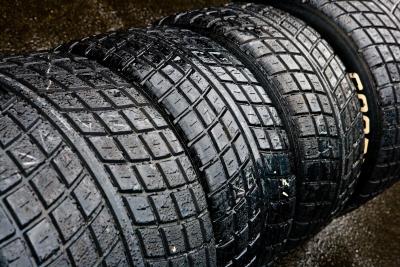
When it comes to performance, your car's tires are (literally) where the rubber meets the road. It matters very little how good your engine, brakes, suspension or driving are if your tires aren't up to the task of putting any of it to the ground. What kind of tires are best for your vehicle depends largely upon the type of vehicle it is, what kind of driving you do and under what conditions.
Most cars and trucks come equipped with all-season tires. This type of tire uses a rubber compound that is best suited to long-term wear and has a tread pattern that is not particularly optimized to any condition. While they have acceptable performance on dry pavement and good traction on snow and wet roads, all-season tires are jacks of all trades and masters of none.
Tires designated as "summer" have softer rubber compounds and larger wide blocks with a minimum of water sipes (channels) to put the most rubber on the road. Any tire sold as "high-performance," "ultra performance" or "race" tires fall into this category. The most extreme example of a summer tire would be racing slicks, which offer the best possible grip on dry pavement but are downright dangerous on wet surfaces.
As the name implies, winter tires use silicone-enhanced rubber to make them as soft as possible, and have very specialized tread to maximize point-contact pressure exerted on the road's surface. The very high contact pressure designed into these tires effectively crushes any ice below into water, drastically enhancing traction over ice and snow. While fantastic in these conditions, winter tires tend to wear out very fast on dry pavement, and their tread pattern makes them terrible handlers on anything but snow and ice.
Tires with very short sidewalls (low profile) are designed to flex less than taller tires under cornering. While this does increase overall grip and handling response, it also means that they are less capable of absorbing road imperfections than taller tires. As tires are the car's first line of defense against road imperfections, this will often result in a rough ride and potentially bent rims when slammed against pot-holes or curbs.
Many enthusiasts opt to install taller or wider tires for increased traction or ground clearance. Installing wider tires is the easiest way to put more rubber on the road for better handling and acceleration, but this comes at a price. That extra rubber increases rolling resistance, which can have a negative impact on fuel economy.
Tall tires increase ground clearance, but there are several drawbacks. Taller tires will effectively lower your gear ratio, decreasing acceleration. They also raise the vehicle as a whole further from the ground, which hurts aerodynamics and raises the center of gravity. These two alterations affect both fuel economy and handling performance in a negative manner.